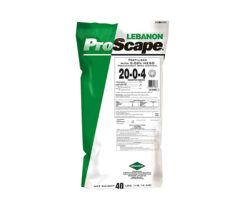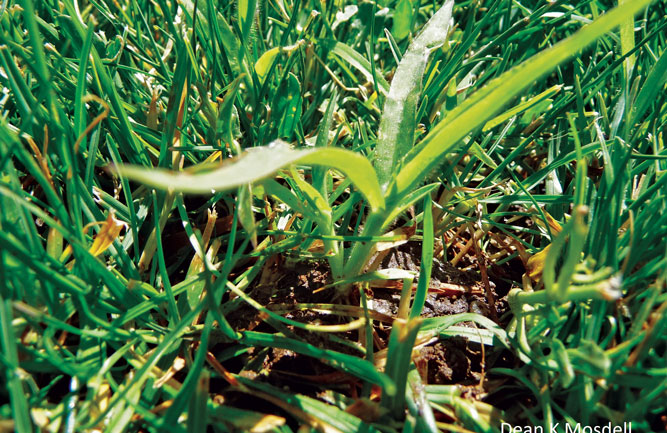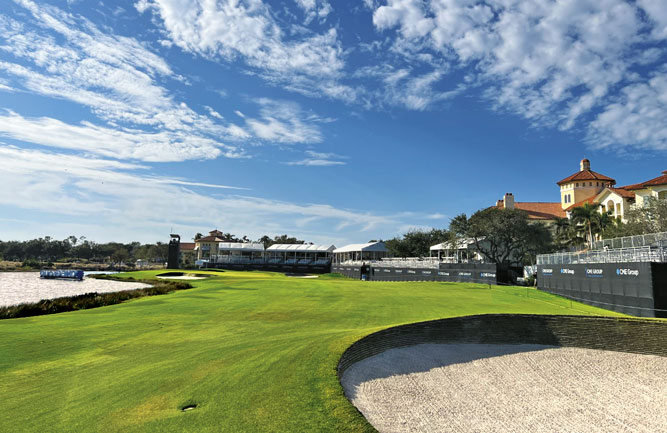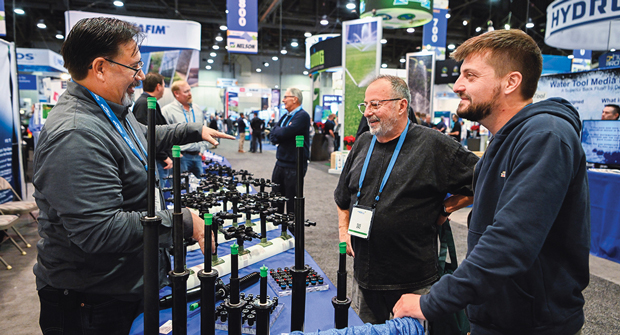Experts’ Insights: Stop crabgrass in its tracks
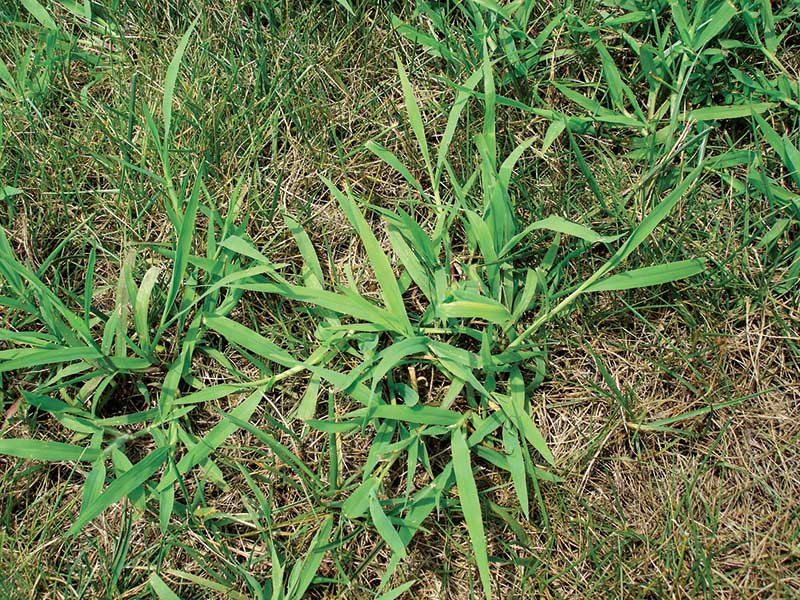
Crabgrass germinates when mean soil temperatures are at about 55 degrees F. (Photo by: Fred Yelverton)
Crabgrass is emerging earlier in the spring due to a warming climate. So, it’s critical for golf course superintendents to make applications in the late winter or early spring, depending on location. Crabgrass germinates when the 24-hour mean soil temperature average is about 53-55 degrees F for a few days. Fred Yelverton, Ph.D., professor and Extension specialist in turfgrass weed science at North Carolina State University, says cool soil temperatures help extend the shelf life of early applications.
“Here’s the beauty in applying it earlier,” he says. “Preemergent herbicides are primarily degraded in the soil by the soil microbes. It’s a pretty safe thing to say apply them earlier. There really isn’t a penalty for applying them earlier because microbial activity gets really up and going when soil temperatures are up in the 60s.”
Excessive water will also degrade some preemergent herbicides. If your area had a wet winter, you may need to go back in with a second application. Yelverton says you still have time if your initial application was made before germination. You’ll likely see crabgrass germination due to herbicide degradation in July and August.
“Make a repeat application of the preemergent herbicide if you experienced excessively wet soils,” he says. “If your soils stayed saturated for extended periods after preemergent application, your yearly herbicide rate may need to be a bit higher than normal due to anaerobic degradation of the herbicide.”
And, if you start to see crabgrass emerging, don’t wait too long to use a postemergent herbicide. Treat the weed at the two- to three-leaf stage.
“There are several effective postemergent crabgrass herbicides available,” he says. “You have to be careful and choose the right product and the right rate for your turfgrass.”
FMC Professional Solutions
Tina Bond, Ph.D.
Technical service manager

Tina Bond (Photo: FMC Professional Solutions)
Large and smooth are the two prominent crabgrasses in the U.S. Both have a toothed, membranous ligule, seed heads with three to five spikes and branched stems that root at the nodes. Large crabgrass has hairy leaves, and smooth crabgrass is smooth. Preemergent applications should be targeted before crabgrass begins to germinate. Germination occurs when soil temperatures reach 55 degrees F for four or more days. Postemergent applications are most effective on younger, pretiller crabgrass. Most labels will tell you how well the herbicide works on certain tiller stages of crabgrass. Rainfall or irrigation is necessary after a preemergent application to achieve the most effective control. Avoid going out with rates that are too low. Always use the recommended label rate for the best results. A healthy stand of turfgrass is always the best defense against weeds.
Corteva Agriscience
Jared Hoyle, Ph.D.
Turf and ornamental territory manager

Jared Hoyle (Photo: Corteva Agriscience)
Crabgrass loves growing in quality turf superintendents are striving to create and protect. The best defense is maintaining healthy turfgrass, which often includes using herbicides. There are many options for pre- and postemergent herbicides, and application timing can vary by region. Effective control is achieved by using a preemergent in the spring when soil temperatures are consistently 50 to 55 degrees F. If crabgrass has emerged, impacting course aesthetics and playability, postemergent herbicide applications are recommended. Products containing dithiopyr can be a game-changer. Herbicides with dithiopyr provide preemergent and early postemergent control of crabgrass — up to the five-leaf stage. It also provides continued preemergent control for the entire season.
PBI-Gordon Corp.
Eric Reasor, Ph.D.
Southeast research scientist

Eric Reasor (Photo: PBI-Gordon)
There are several species of crabgrasses that are problematic weeds in all golf course situations, including greens and roughs. Most crabgrasses are summer annual grassy weeds that germinate in spring when soil temperatures warm to 55 degrees F for several days. Maintaining an actively growing turfgrass through proper cultural practices comprises most of crabgrass management. For example, mowing too low allows more light into the turfgrass canopy, facilitating more crabgrass germination. Preemergent herbicides are typically highly effective at controlling crabgrass. Make initial applications prior to germination and then a second application two months later for best results. Rotate herbicide modes of action to prevent resistance from developing. Some crabgrass breakthrough is inevitable, so there are also several postemergent options available









